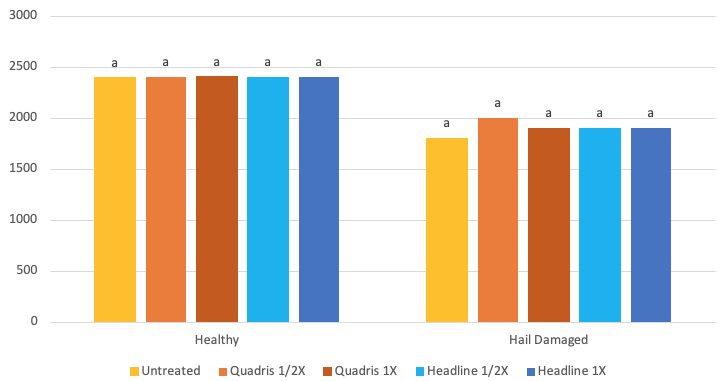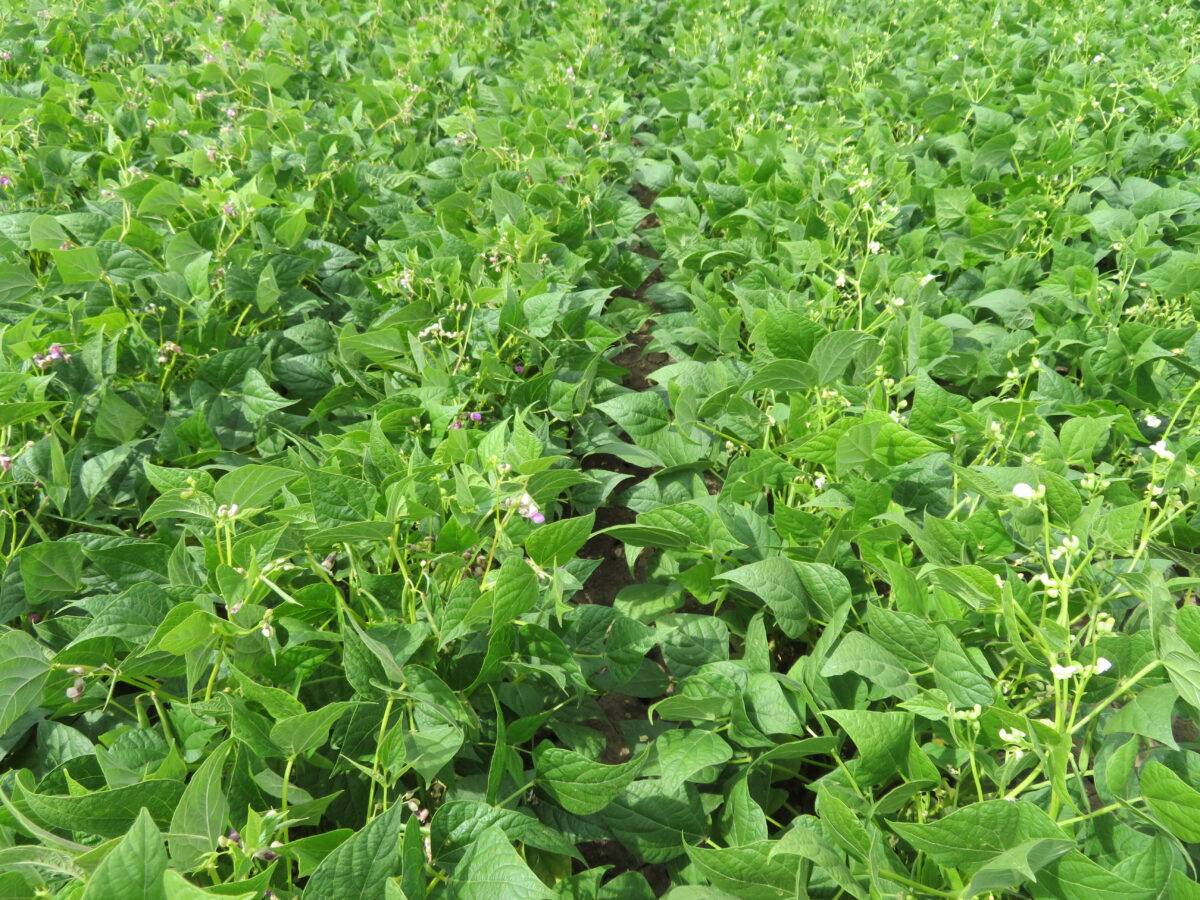Strobilurin fungicides control foliar diseases such as anthracnose in dry beans. Some companies promote other ‘plant health benefits’ including stress tolerance, delayed maturity, and lower water use, particularly for crops that have been stressed by drought or hail damage. The purpose of this study was to determine if these benefits exist in a healthy dry bean crop and a crop damaged by simulated hail.
Sixteen small plot experiments were conducted in 2006-2009 at the Huron Research Station, Exeter Ontario, using navy (cv. OAC Rex and T9905), cranberry (cv. Etna) and kidney (cv. Red Hawk) market classes. The eight experiments in 2008-2009 were split, and half received simulated hail damage, using a string trimmer to remove about 40% of the total foliage at 1st flower. Quadris and Headline fungicides were applied at ½ and full label rates and compared to an untreated control. Seed yield (kg/ha) was adjusted to 18% moisture.

There was no plant health benefit, when Quadris or Headline were applied to a healthy crop (Figure 1). Each cultivar and market class responded similarly. Detailed plant maturity data were not collected, but few differences were observed. Simulated hail damage reduced yield by 29%. Applying Quadris or Headline did not visibly reduce plant stress and did not result in a yield response to any cultivar or market class. There were no meaningful differences in seed pick (discoloured seed) or seed weight in any cultivar in the study (data not shown). This large data set over multiple years should convince growers to only use strobilurin fungicides for the control of labelled diseases.
Originally published in Canadian Journal of Plant Science 2014. Volume 94. Pages 1-5. Revised in July 2020 for drybeanagronomy.ca.
